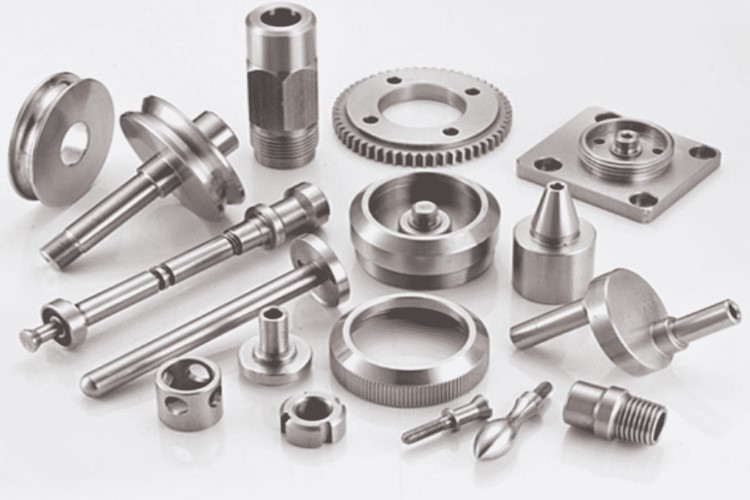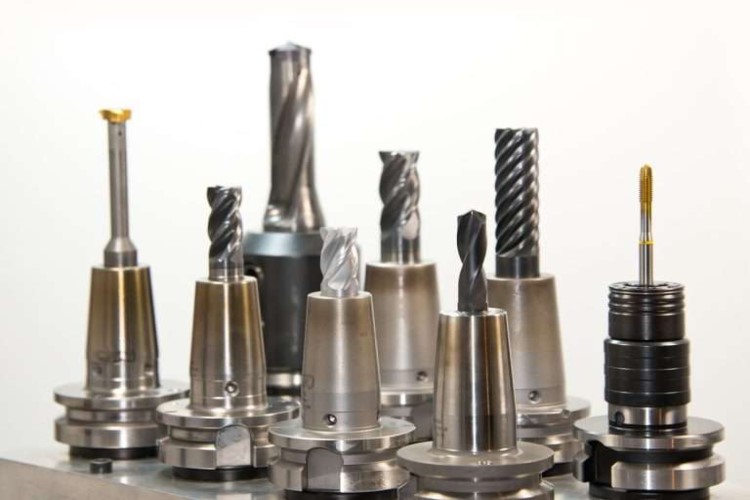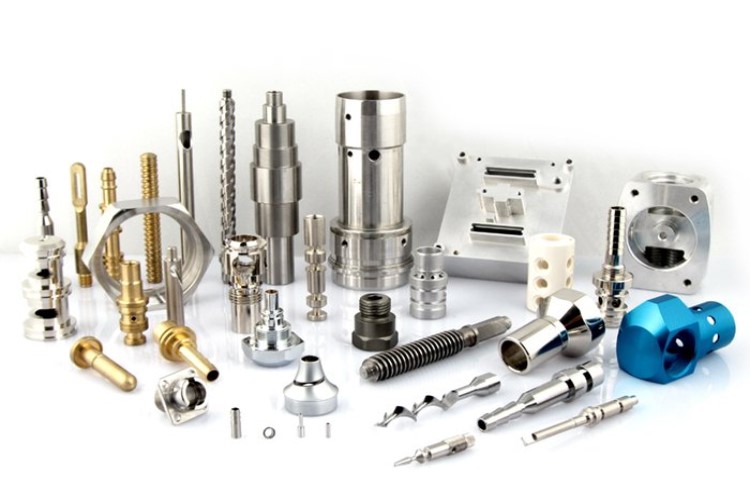In the CNC milling process, the machine interprets instructions derived from designs created in a CAD program. These designs may exist in either two-dimensional or three-dimensional formats. After finalizing the designs, they are transformed into a format that the machine can understand, guiding the machine through each movement necessary to reproduce the CAD design using the selected material. Each part of a CNC mill plays a role in the machining process.
The Main Parts Of A CNC Milling Machine
What are the various components that make up a CNC milling machine or Machining Center? The explanation below outlines its key elements.
The Frame: the Primary Structure of the Machine
At the core of the milling machine lies the frame, which serves as the primary structure providing stability and rigidity. Typically, it consists of a base and one or more detachable columns.
The most important element of the frame is called the headstock. This is where the main spindle is mounted. Although often overlooked, the headstock is such an important part of a CNC mill. If it lacks rigidity and fails to support the spindle adequately, vibrations and chattering may occur during machining. Such issues can lead to machining inaccuracies and reduce the lifespan of your cutting tools.
Spindle: The Cutting Tools’ Driver
Often referred to as the heart of a CNC milling machine, the spindle features a rotating assembly and a tapered section designed for tool holders. The tool is generally attached to the spindle shaft through a tool holder. A motor with varying transmission levels drives the spindle’s rotation.
To ensure the spindle remains in optimal condition over time, different lubrication methods are utilized. These can include grease lubrication which is not ideal for prolonged high-speed operations, or air-oil lubrication, suitable for extended cycles at higher speeds.
Depending on the specific machine design, the spindle may be oriented either vertically or horizontally.

Axes of the CNC Milling
Axes are important parts of a CNC mill. CNC milling machines typically feature X, Y, and Z axes, along with optional rotational axes such as C, A, or B, depending on the specific configuration. These axes can be programmed through g-code within the CNC controller.
Columns of the CNC Mill
CNC machining centers may have either single or double columns. The choice between single and double columns is influenced by the complexity of the machining tasks at hand.
CNC Milling Machine Control Panel
The CNC control panel is the machine tool’s primary “nervous system,” housing the electronics that facilitate various cutting operations through programmed functions. It features a monitor and buttons for programming, allowing users to input data and codes. A manual function is typically available as well. For optimal usability, this part of a CNC mill should be designed for easy access and convenience during operation.
Automatic Tool Changer or ATC
Tool changers can be either affixed to the column or installed separately on the machine. The latter option is often favored when larger tool changers are required, accommodating anywhere from 40 to 300 different tools. This configuration not only streamlines operations, saving both time and effort but also minimizes unnecessary vibrations for operators during use.
CNC Milling Machine Tool Holders
Tool holders are available in a wide array of sizes, systems, and applications. The most common sizes include BT 30, BT 40, and BT 50, where “BT” denotes the taper angle of the holder’s cone.
For enhanced rigidity and balanced high-speed rotations, the BBT versions are highly recommended as they can boast double contact points between the tool holder and the spindle. This design results in a stronger connection, significantly reduced vibrations, and a balanced performance rated to class Q 2.5.
Consequently, this part of a CNC mill not only enhances the machining capabilities and outcomes of your machine tool but also improves the surface finish of your parts or molds, prolongs tool life, and ultimately reduces the need for spindle replacements by extending bearing longevity.
BBT systems provide a significantly stiffer and more rigid connection between the tool holder and spindle, thanks to their double contact clamping design, which secures the connection between the taper/cone and the front spindle nose surface.

Work Surface or Tables
A sturdy work surface is considered an excellent part of a CNC mill and a foundation for securely clamping the workpiece. It can also accommodate fixtures or vices to keep the piece firmly in position. Most tables are designed with T-slots, facilitating the straightforward attachment of vices, fixtures, or parts.
In horizontal CNC milling machines, pallets equipped with tap holes offer enhanced versatility for relocating various workpieces during machining. The use of magnets is becoming increasingly popular for quick, secure clamping solutions as well. Ideally, these magnets should be integrated into the machine’s table to maintain the Z-axis height.
Coolant Reservoir: Overlooked but Essential
Typically, CNC machining centers are equipped with parts of a CNC mill called a coolant reservoir that supplies coolant to the cutting surface or spindle during machining operations. This not only extends the lifespan of the machine and its components but also effectively dissipates heat generated during the process, helping to regulate temperatures.
When thinking about a coolant supply, the guiding principle is simple: “The more, the better.” An ample coolant supply helps operators prevent overheating of the coolant itself.
For deeper drilling tasks, or when machining deeper cavities in mold and die applications, the Coolant Through Spindle (CTS) system is highly recommended as the most important part of a CNC mill. A standard coolant pressure of 30 bar is advisable, with options extending up to 70 bar. Only specialized applications would necessitate even higher pressures.
It’s crucial to consider the use of tools with larger coolant hole diameters, as these may require a Pressure – High Flow Rate Pump to meet the machining demands effectively.
The Main Milling Tools for CNC Milling Machines
As you may have found out up to now, CNC milling machines are highly versatile and capable of employing a wide range of cutting and shaping tools to achieve precise material removal. The movement of these tools within the machine, combined with the distinct shapes of the cutters, allows for the effective machining of various materials.
This adaptability makes CNC milling an essential process in manufacturing and the creation of beautiful and developed designs and components with high accuracy.
Among the diverse array of tools and parts of a CNC mill, one can find end mills in both flat and ball nose designs, as well as straight and form tools. Other essential tools include face mills, various types of drills such as U-drills and spiral borers, taps, and reamers.
As we mentioned earlier, tool holders play a crucial role in the milling process, with options like hydraulic, shrink-fit, and press-fit types available to ensure secure and efficient tool attachment. This comprehensive selection of tools enhances the machine’s capability to perform a wide variety of tasks, giving you the ability to create anything you have in your imagination.

Conclusion
CNC milling machines are usually constructed by so many different parts and components. The spindle, axis, frame, table, coolant reservoir, tool holder, and control panel are among the most important parts of a CNC mill. If you wish to have your own CNC milling machine or you want to put parts together to make one, Maple CNC is the one-stop shop for every little detail you think of.


